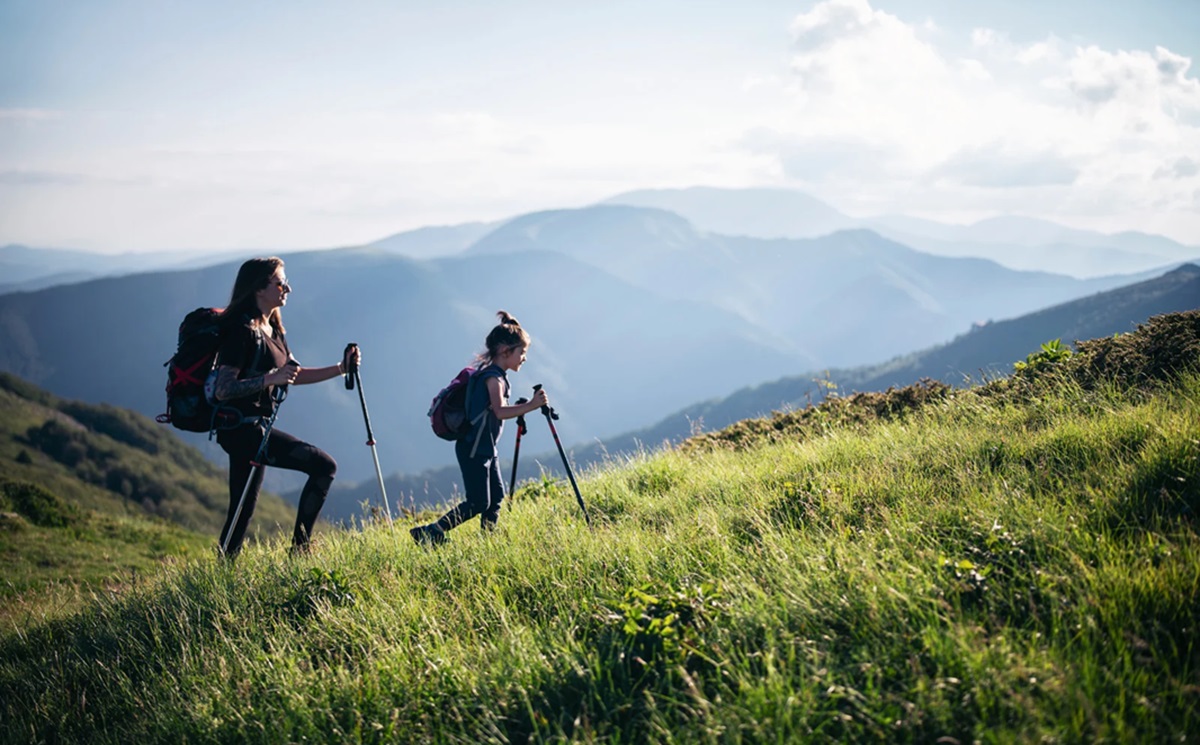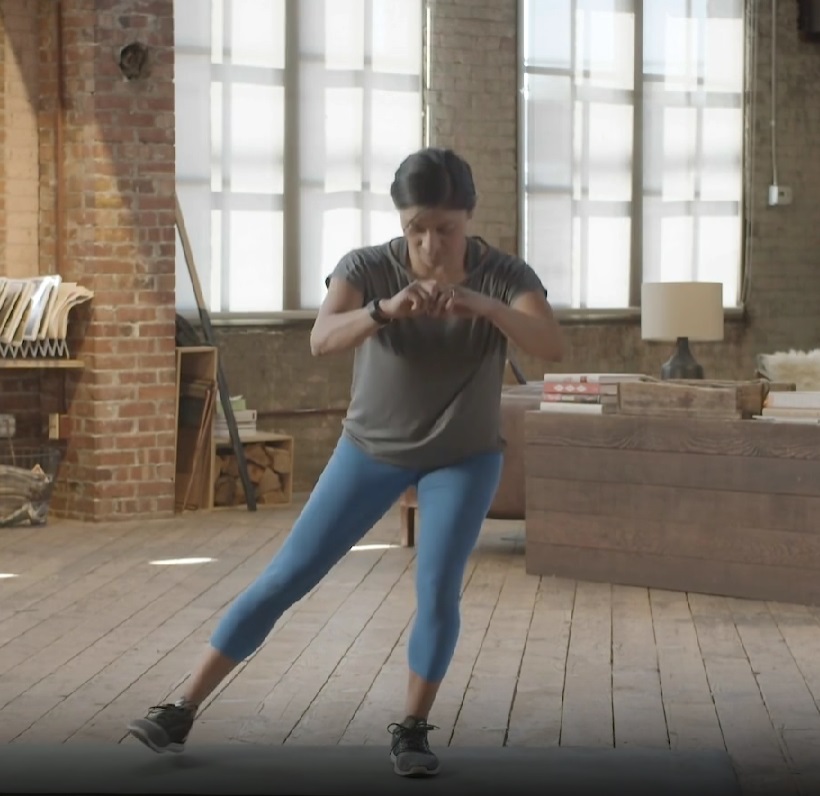
Hiking is one of the most rewarding ways to explore nature. But learning how to train for hiking is the first step toward enjoying longer, more adventurous outdoor experiences.
Many outdoor enthusiasts find that hiking naturally pairs with camping, as longer treks often require overnight stays under the stars. Whether you’re setting up a tent deep in the wilderness or enjoying a simple trail hike, both activities demand endurance, strength, and preparation.
So, understanding how to train for hiking is essential to ensure you can fully enjoy your camping trips without feeling exhausted or overwhelmed. Because with the right training, you will be ready to embrace every step of your outdoor adventure without injuries or pain.
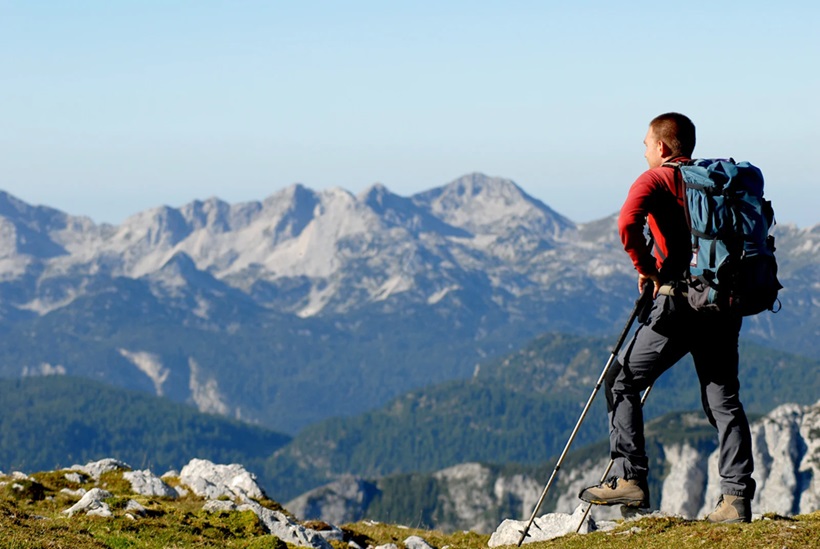
Why Training Matters for Hiking
Understanding how to train for hiking is key to making every outdoor adventure safer, more enjoyable, and more rewarding. Hiking challenges your muscles, joints, and cardiovascular system, especially on rugged or steep trails.
So, without proper preparation, you risk injury, fatigue, or missing out on the full experience. Training helps you build the endurance, strength, and balance that you need to tackle different terrains with confidence.
In addition, training for hiking improves your recovery time and mental resilience. These two are both critical for multi-day hikes or camping trips. In conclusion, prioritizing how to train for hiking ensures you are physically and mentally ready for whatever the trail brings.

How to Prep for Hikes: 8 Exercises to Fuel You
If you are looking for the best ways to understand how to train for hiking, focusing on functional strength, stability, balance, and endurance exercises is essential. Hiking demands more than just walking. In fact, it requires strong legs, hips, core, and even upper body strength to manage uneven terrain and carry gear.
To prepare your body for the dynamic movements, you should incorporate a variety of exercises like jump squats, step-ups, bridges, and side planks. You can improve your muscle endurance, protect your joints, and increase your overall training performance with proper training. So, are you ready? Let us begin to master how to train for hiking!
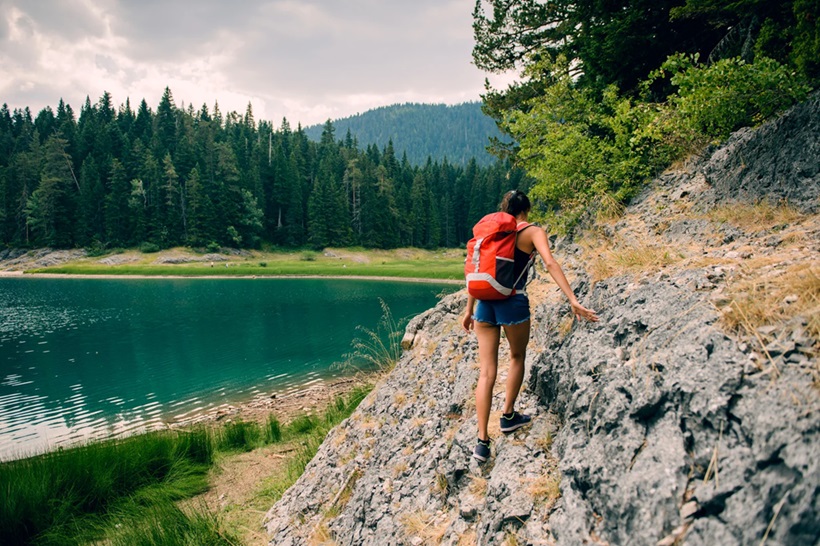
Jump Squats
Jump squats are a powerful exercise to build explosive strength, endurance, and balance—all vital components for hiking on steep trails. They develop your quads, glutes, calves, and hamstrings, helping you climb hills and navigate rocky paths with ease. Adding jump squats to your training will also boost your cardiovascular fitness, which is crucial for long hikes.
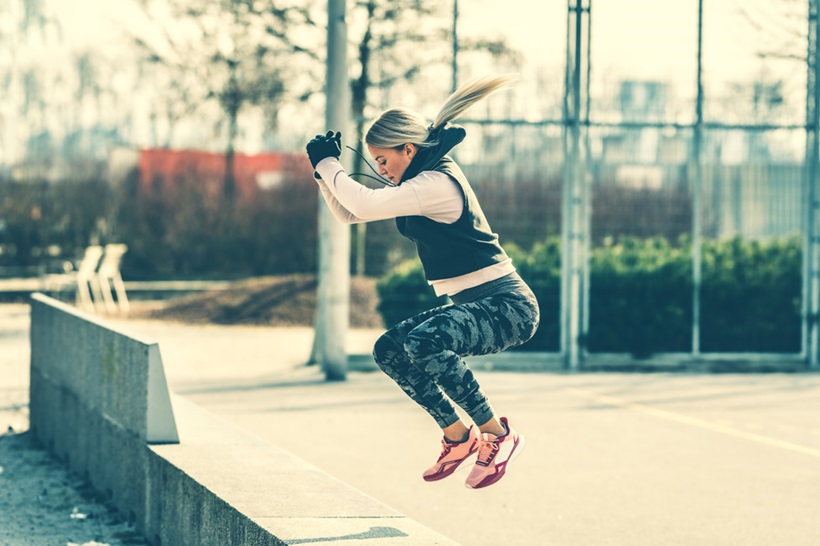
How to Do It:
- Stand with feet shoulder-width apart.
- Lower into a squat, keeping your chest up and knees behind your toes.
- Explode upward into a jump, swinging your arms for momentum.
- Land softly, immediately lowering back into a squat.
Things to Consider:
- Focus on landing softly through your toes and heels to protect your knees.
- Feel the work in your quads and glutes.
- Keep your core tight throughout to maintain balance and prevent lower back strain.
Hip Roll Exercise
The hip roll exercise strengthens the muscles around your hips, glutes, and lower back, helping improve your stability during uneven hikes. Strong hips are crucial for absorbing shock and preventing injuries on the trail, especially when carrying a heavy backpack.
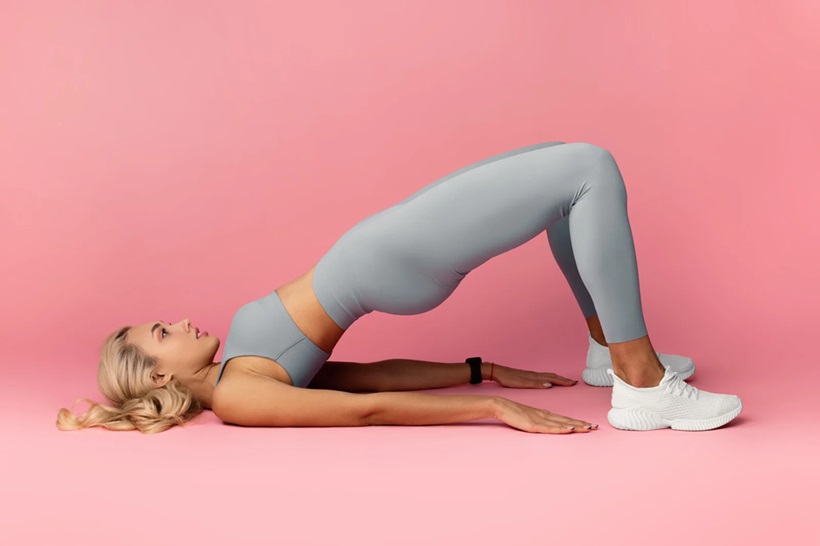
How to Do It:
- Lie on your back with knees bent and feet flat on the floor.
- Squeeze your glutes to lift your hips toward the ceiling.
- Keeping your hips raised, slowly roll your knees side to side without letting your shoulders lift off the floor.
Things to Consider:
- Focus on engaging your glutes and core, not your lower back.
- Move slowly to maintain control and feel the stretch around your hips.
- Keep breathing steadily and avoid dropping your hips too low between rolls.
Step Up Exercise
Step-ups mimic the motion of climbing uphill, making them one of the most effective exercises when learning how to train for hiking. They strengthen your quads, hamstrings, and glutes while enhancing balance and endurance.
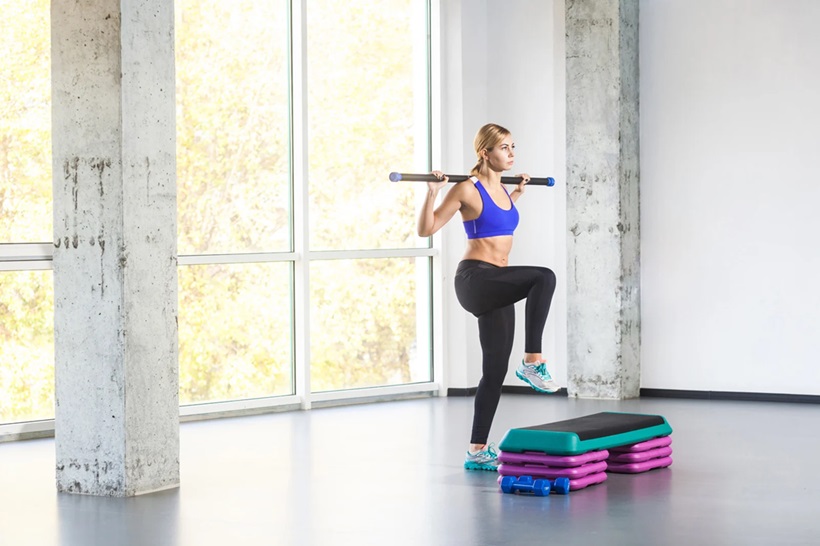
How to Do It:
- Stand facing a sturdy bench or step.
- Place your right foot firmly on the step.
- Push through your right heel to lift your body up, bringing your left foot to meet your right.
- Step down with your left foot first and repeat.
Things to Consider:
- Make sure your entire foot is planted firmly on the step to avoid strain.
- Press through your heel, not your toes, to activate your glutes and hamstrings.
- Keep your core engaged and torso upright to maintain proper form.
Heel Down Exercise
The heel-down exercise is fantastic for building ankle stability, knee control, and eccentric strength, which protects your joints when descending hills during hikes.
How to Do It:
- Stand on a raised step with your heels hanging off the edge.
- Slowly lower your heels down below the step level, stretching your calves.
- Pause briefly, then push back up onto your toes.
Things to Consider:
- Perform the movement slowly to engage the calves and Achilles tendon properly.
- You should feel a deep stretch in your calves and ankles.
- Kep your core tight to support your balance throughout the exercise.
Squat Curl Overhead Press Exercise
This full-body move strengthens your legs, core, arms, and shoulders, helping you manage the demands of carrying gear and hiking uphill. It’s an excellent addition for those mastering how to train for hiking.
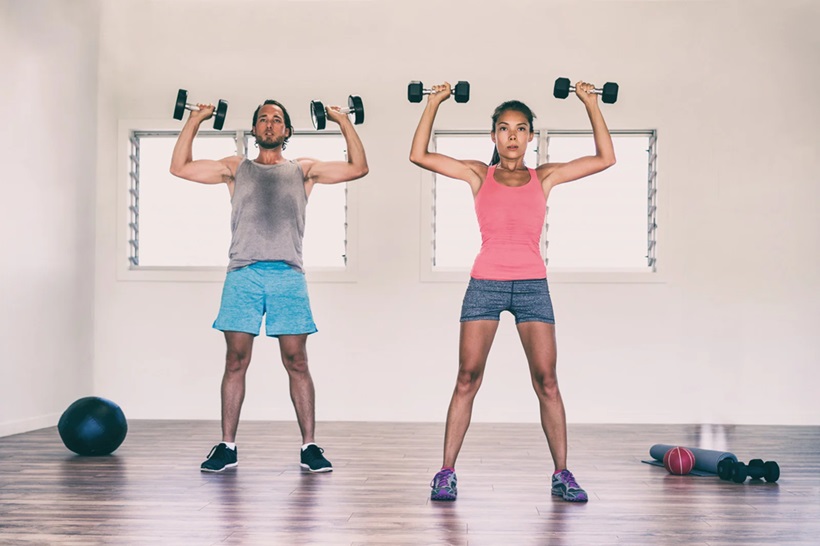
How to Do It:
- Hold dumbbells at your sides.
- Perform a squat while keeping your back straight.
- As you stand up, curl the dumbbells to your shoulders.
- Press the weights overhead.
Things to Consider:
- Make sure your knees track over your toes during the squat.
- Feel the burn primarily in your quads, glutes, biceps, and shoulders.
- Keep movements smooth and controlled to prevent injury.
Bridge with Hamstring Curl Exercise
This exercise targets your glutes, hamstrings, and lower back—all crucial muscle groups for hiking stamina and power. It also improves your hip stability, essential for long treks.

How to Do It:
- Lie on your back with your feet on a stability ball or sliders.
- Lift your hips into a bridge position.
- Slowly curl your heels toward your glutes while keeping your hips lifted.
- Extend your legs back out without letting your hips drop.
Things to Consider:
- Engage your glutes and hamstrings throughout.
- Avoid arching your lower back; keep your core tight.
- Move slowly and with control to maximize muscle engagement.
Side Plank with Leg Raise Exercise
This advanced move challenges your core, hips, and shoulders, building essential stability for rough, uneven hiking paths. It strengthens your obliques and gluteus medius, key muscles for balance.
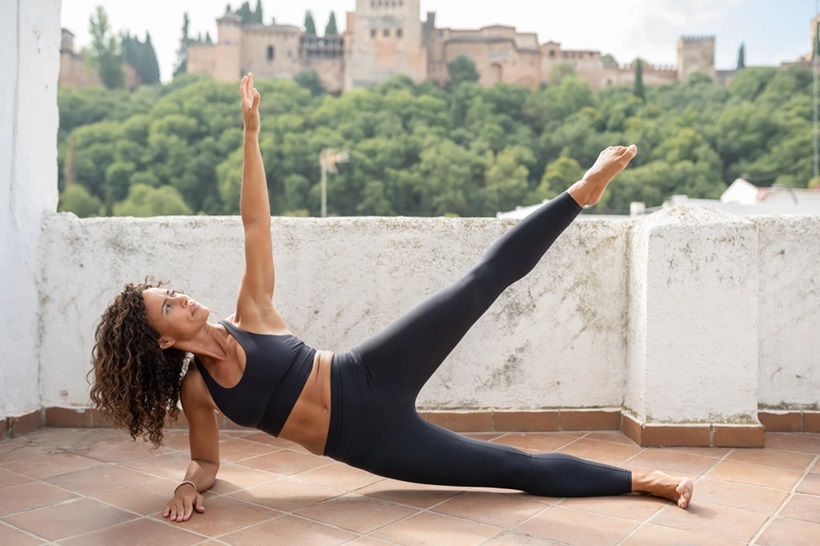
How to Do It:
- Start in a side plank position, resting on your forearm.
- Stack your feet or place one in front of the other for balance.
- Lift your top leg slowly without letting your hips sag.
- Lower the leg and repeat.
Things to Consider:
- Keep your hips high and your body aligned in a straight line.
- Focus on feeling the side of your glutes and obliques working.
- Move the top leg slowly to maintain full control and prevent wobbling.
Hip Clock Exercise
The hip clock exercise builds dynamic hip strength, flexibility, and stability, crucial for moving efficiently over rocky and shifting terrain.
How to Do It:
- Stand tall on one leg.
- Imagine a clock on the ground.
- Tap your lifted foot lightly at the 12, 3, 6, and 9 o’clock positions.
- Keep your standing leg stable and slightly bent.
Things to Consider:
- Focus on controlled movements; do not rush.
- Feel the burn in your standing leg’s hip and glutes.
- Keep your core tight to maintain balance and prevent tipping over.

